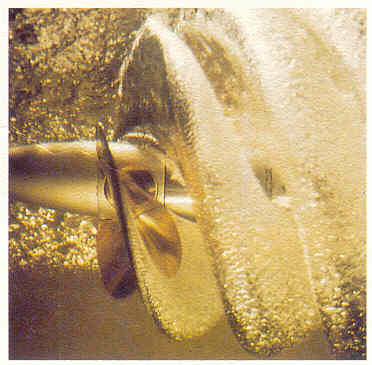|
|
|
||
|
|||
|
|
|||
|
Propulsion is an important part not only for launching spaceships, but also for navigating (marine crafts) so a destination can be reached. But how does propulsion work?
First,
let's start with a definition of propulsion.
The
word propulsion is derived from latin word propellere, which
means to propel. The
dictionary definition of propel is drive forward or onward by or as if by
means of a force that imparts motion.
|
From the desktop of
Ramses Herrera |
||
|
In
the marine propulsion all movement of a boat in the water has a resistance
against advance
to overcome drag, then we needed the propulsion. When saying propulsion, we
are not only talking about that one conducted by an engine and a propeller.
The propulsion can be also exerted by tow or by action of the wind, it is
also exerted by reaction, hydraulic or aerial power, and don't forget the
propulsion by oar or with paddle wheels. A single condition is common to all
systems of propulsion: the produced push must be equal to the resistance
offered to move forward, at this point the object is in dynamic balance with
its surroundings, and it will maintain speed, that is the essence of
propulsion. A
moving ship experiences resisting forces from the water and air which must
be overcome by thrust supplied by some thrust-producing mechanism. In the
earliest days this consisted
of manually-operated oars, which gave place in turn to sails and then
mechanical devices such as jet, paddle-wheels and propellers of many
different forms. There
are now many types of ship propulsion devices. Unusual and
inefficient devices
were invented. Tried and discard. The paddle wheel, which was used
successfully on the great western, and many other steamers during the middle
of the nineteenth century has subsided into near obscurity as an open-ocean
propulsion system. While it still may exist in some remotely located
riverboats and special-purpose craft, it has certainly passed its days of
significance. The marine propeller with its many variations is the prime propulsive device of modern ships. Of
the successful types of propulsive devices presently in use, the following
may be grouped in four distinct categories:
If
you have any questions or any suggestions to any subject in these technical
issues or If you want to be removed
from this mailing list, please send an e-mail with your comments to
newsletter@ricepropulsion.com
|
|||


